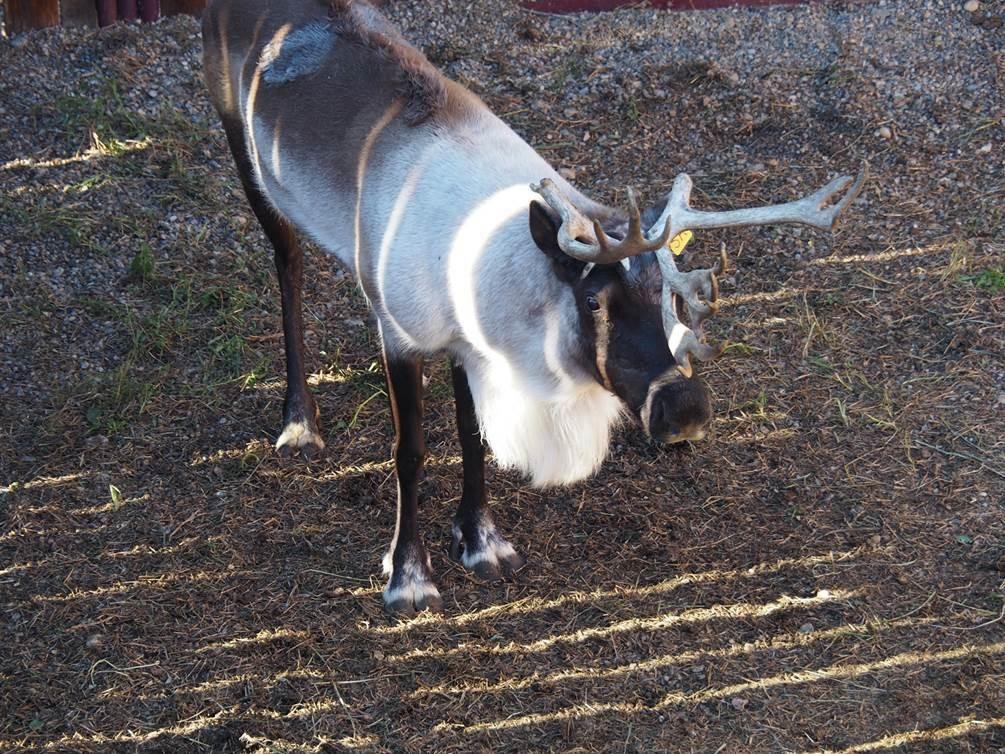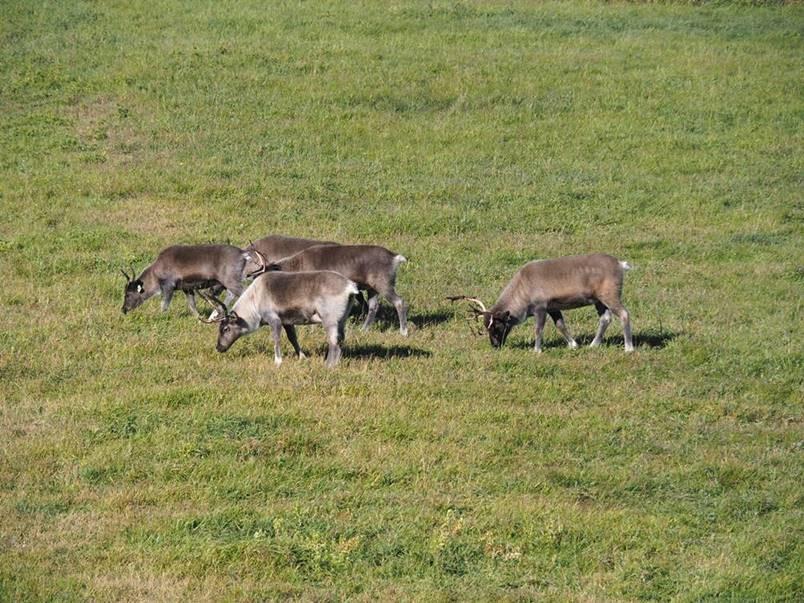Sept. 22, 2020
Researchers ask: Are Canada’s threatened caribou at risk of chronic wasting disease?

As cases of an infectious disease that kills members of the deer family continue to rise in Alberta, a new study sheds light on the risk of chronic wasting disease (CWD) to Canadian caribou — a species officially listed as threatened.
CWD is one of a group of infectious illnesses called prion diseases. They occur when normal prion proteins, found on the surface of many cells, become abnormal and clump in the brain, causing severe brain damage. One of the best known prion diseases is bovine spongiform encephalopathy (BSE), or mad cow disease. Animals with CWD lose weight drastically (wasting), and suffer other symptoms like stumbling and drooling. The disease is fatal in all cases. There’s no cure, treatment, or way to prevent it.
Analyzing CWD susceptibility
To better understand the risk of CWD to Canada’s caribou, Maria Arifin, a University of Calgary Faculty of Veterinary Medicine (UCVM) PhD student, genotyped blood and tissue samples of caribou from B.C., Saskatchewan, Yukon, Nunavut, and the Northwest Territories. As part of the study, published in the journal Molecular Ecology, Arifin analyzed the prion protein gene sequence of some 1,000 caribou, and also considered results from an earlier 2017 study conducted on Alberta caribou.

Maria Arifin, a PhD student at UCVM, published a study of chronic wasting disease in caribou.
Faculty of Veterinary Medicine
She was looking for genetic variants — called polymorphisms — that might make caribou more or less susceptible to CWD. Arifin also analyzed the distribution of these polymorphisms in herds in different geographical locations.
“Experimental CWD studies in reindeer and fallow deer show that animals carrying this particular polymorphism had reduced susceptibility to CWD, so that's what we're interested to see,” says Arifin. “Where, geographically, is this polymorphism most concentrated? What's the distribution like? To answer these questions, we did sequencing on these samples to find this polymorphism, and then we mapped them based on their locations.”
Risk of spread to caribou a ‘huge concern’
“Prions in CWD-infected animals are released in urine, feces, they are found in blood, they are found in muscles, and this contributes to the transmission of the disease from animal to animal through either direct contact or through contact with contaminated environments, like soil or plants,” says Arifin’s PhD supervisor, Dr. Sabine Gilch, PhD, associate professor at UCVM and Canada Research Chair in Prion Disease Research.
“As a result, we’re not able to control the spread of the disease in wild animals, so cases are increasing.”

Sabine Gilch is a Tier II Canada Research Chair in Prion Disease Research at UCVM. The long-term goal of her research is to translate basic research into novel diagnostic or therapeutic targets to combat prion diseases.
Faculty of Veterinary Medicine
In Canada, CWD has been found in Saskatchewan and Alberta, as well as Quebec, in a captive herd of red deer. It's also infected cervids in more than half of the states in the U.S., and in Norway, Finland, and Sweden. It has been found in deer, elk, reindeer, and moose.

Caribou and reindeer are the same species (Rangifer tarandus), European caribou are called reindeer. UCVM has a small herd of reindeer.
Antonia Klein
“CWD has not yet been found in Canadian caribou,” says Gilch, “But it is a huge concern, as areas with known infected deer start to overlap with caribou habitat. Caribou are threatened already, as populations are declining, and CWD would make things even worse.”
Findings could influence caribou management strategies
Arifin found that the polymorphism existed in both woodland and barren-ground caribou — two subspecies of caribou found in Canada. Overall, there is more of the polymorphism in barren-ground populations than in the woodland caribou. And the more susceptible woodland populations are closer to deer populations where CWD has been found.
Arifin and Gilch are concerned that the proximity of woodland caribou to infected deer populations means an increased risk of CWD spread.
“Caribou play a significant role in Indigenous culture, history, food security, and the economy,” adds Arifin. “So determining frequencies of the polymorphism associated with susceptibility to CWD is important for future wildlife management measures.”
The project, funded through Genome Canada, involved a number of collaborators including the Canadian Food Inspection Agency, Carleton University, the University of Saskatchewan, and a number of government organizations. Together they shared more than 1,000 caribou blood samples, collected over the past 10 years with Arifin.

A herd of reindeer graze on summer grass.
Antonia Klein
CWD One Health workshop series
A virtual workshop series around issues that are threatening human, animal, and environmental health, and the sustainability of Alberta's livestock industry is being organized with the participation of the following: One Health at UCalgary, Genome Alberta, the University of Alberta School of Public Health, the Alberta Veterinary Medical Association, the AMR-One Health Consortium, and the Calgary Prion Research Unit.
Workshops on CWD will be held Sept. 30 and Oct. 7 at 8 a.m. (MT). “The intention is to discuss the specific needs of different stakeholder groups like Indigenous communities, elk farmers, and hunters’ organizations,” says Gilch.
The workshop series is open to the public and brings together stakeholders from the private sector, academia, and government for presentations and panel discussions. Find more information, and register for this workshop.






